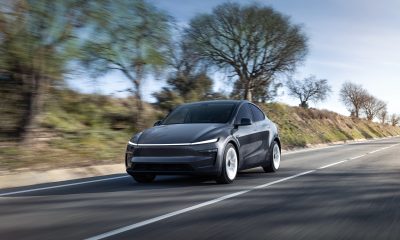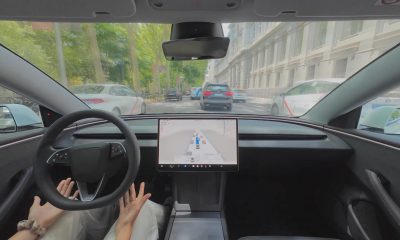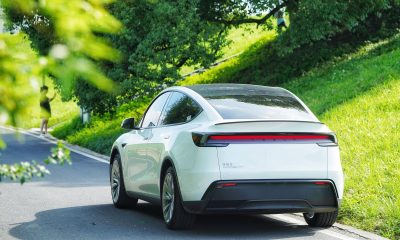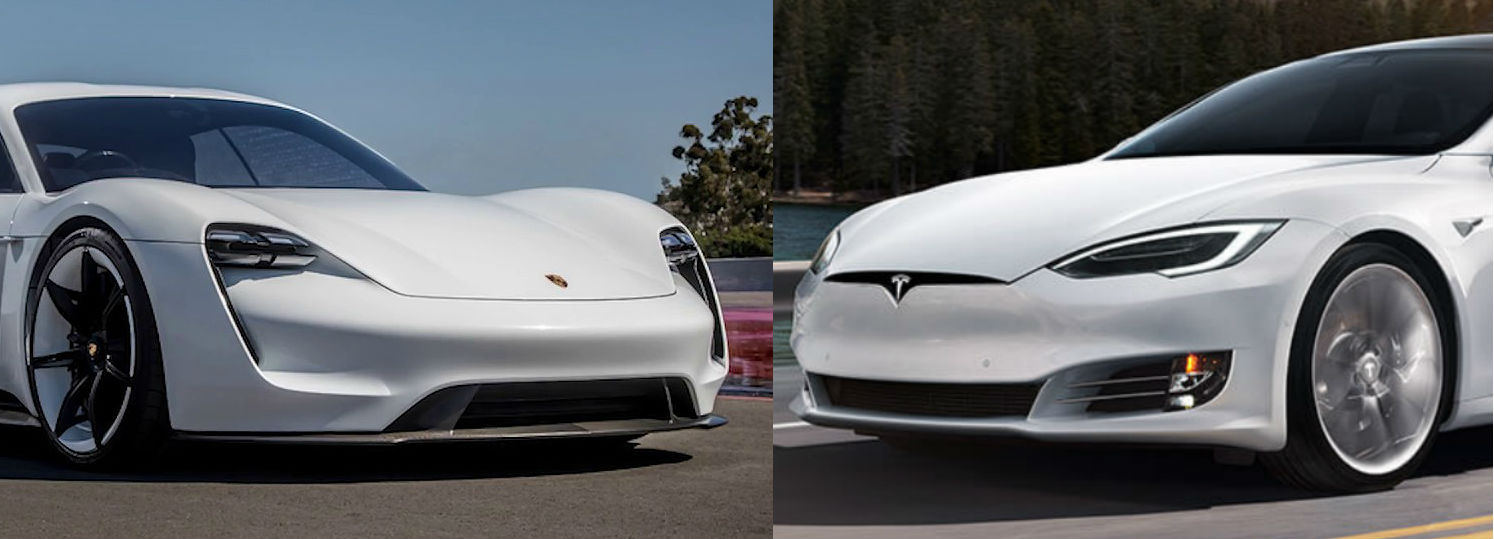

Lifestyle
Tesla Model S finally takes on Porsche Taycan in electric heavyweight battle
The Tesla Model S Performance and Porsche Taycan Turbo S have finally gone head to head. Tesla’s flagship sedan which was first released in 2012 has been waiting for a worthy competitor, and it finally received a rival when Porsche unveiled the Taycan in September 2019.
Automotive publication Car and Driver pegged the two Dual Motor electric sedans up against each other to see what vehicle was superior. After testing everything from performance to comfort, they determined the winner was the Model S.
A neutral party was exactly what the electric vehicle community needed to determine which performance-level car was superior. Car and Driver noted that while the vehicles both had positives and negatives, neither truly disappointed overall. It was clear the reviewers were happy with both the 778 horsepower Model S “Raven” and the 750 horsepower Taycan, but only could be the winner.
The Taycan held the upper-hand during the performance test. The Porsche’s 30-to-50 MPH and 50-to-70 MPH acceleration rates were the fastest they had ever seen in a vehicle. The Taycan also offered 1.3 G-forces of initial acceleration, comparing it to what they thought a time-travel portal would feel like.
Another point was given to the Taycan after charging the vehicles. The Taycan utilized 350-kW Electrify American chargers that were never occupied by another electric car during the duration of the Porsche’s charging session. It also charged at a consistently higher rate than the Tesla Supercharger C&D used for the Model S. “Tesla’s Supercharger network might have more stations, but it also has more users, and Tesla owners have faced long queues just to plug in during peak travel times.”
While C&D did state they feel the Taycan is a better vehicle “from the driver’s seat alone,” it was not enough to justify the drastic price difference between the two vehicles. The Tesla Model S Performance is available for $99,990 on Tesla.com, while the Taycan Turbo S is $188,960 on Porsche’s website.
The Model S offered the reviewers a fast, spacious, and comfortable driving experience. They recognize the vehicle’s catalytic effect on the growth of not just electric vehicles, but the automotive industry in general. The car’s interior, including its huge infotainment screens, which have spread to internal combustion vehicles, was just one of the reasons the Model S was superior.
While the Taycan outperformed the Model S in eight of the thirteen different speed tests that included a one-foot rollout, 0-60 MPH, 0-100 MPH, 0-130MPH, 0-150 MPH, 5-60 MPH rolling start, top gear tests from both 30-50 MPH and 50-70 MPH, a quarter-mile race, top speed, braking from both 70 and 100 MPH, and roadholding tests on a 300-foot diameter skidpad, the reviewers stated they missed other features when they started driving the Porsche. The biggest was Tesla’s “one-pedal driving” feature, “we missed it every time we hopped back into the Taycan,” Dave VanderWerp wrote.
- Porsche Taycan Turbo S
- Rollout, 1 foot: 0.2 seconds
- 0-60 MPH: 2.4 seconds
- 0-100 MPH: 6.0 seconds
- 0-130 MPH: 10.5 seconds
- 0-150 MPH: 15.2 seconds
- 5-60 MPH rolling start: 2.9 seconds
- Top Gear, 30-50 MPH: 1.1 seconds
- Top Gear, 50-70 MPH: 1.6 seconds
- Top Speed (according to Porsche): 162 MPH
- Braking, 70-0 MPH: 155 ft, 100-0 MPH: 306 ft
- Roadholding, 300-ft-dia skidpad: 0.99 g
- Tesla Model S Performance “Raven”
- Rollout, 1 foot: 0.2 seconds
- 0-60 MPH: 2.5 seconds
- 0-100 MPH: 6.4 seconds
- 0-130 MPH: 11.9 seconds
- 0-150 MPH: 18.5 seconds
- 5-60 MPH rolling start: 2.8 seconds
- Top Gear, 30-50 MPH: 1.1 seconds
- Top Gear, 50-70 MPH: 1.6 seconds
- Top Speed (according to Tesla): 163 MPH
- Braking, 70-0 MPH: 156 ft, 100-0 MPH: 313 ft
- Roadholding, 300-ft-dia-skidpad: 0.92 g
One surprising portion of the comparison was range. The Model S boasts an EPA estimated 348 miles per charge, while the Taycan only offers 192 miles. However, a test where both vehicles traveled at 75 MPH for a total distance of 100 miles proved that the Model S only held a slight advantage with only 10 more miles of range after completion.
While both cars were impressive and offered something special, the nearly $190,000 price tag of the Taycan Turbo S was simply too high for what it offered. The Model S was a better car all-around as its virtues were simply undeniable and proven after eight years of continuous top-notch performance. “There’s no question which is the better buy,” they said, and it is the Model S.
The full comparison of both vehicles from Car and Driver is available here.
Elon Musk
X account with 184 followers inadvertently saves US space program amid Musk-Trump row
Needless to say, the X user has far more than 184 followers today after his level-headed feat.
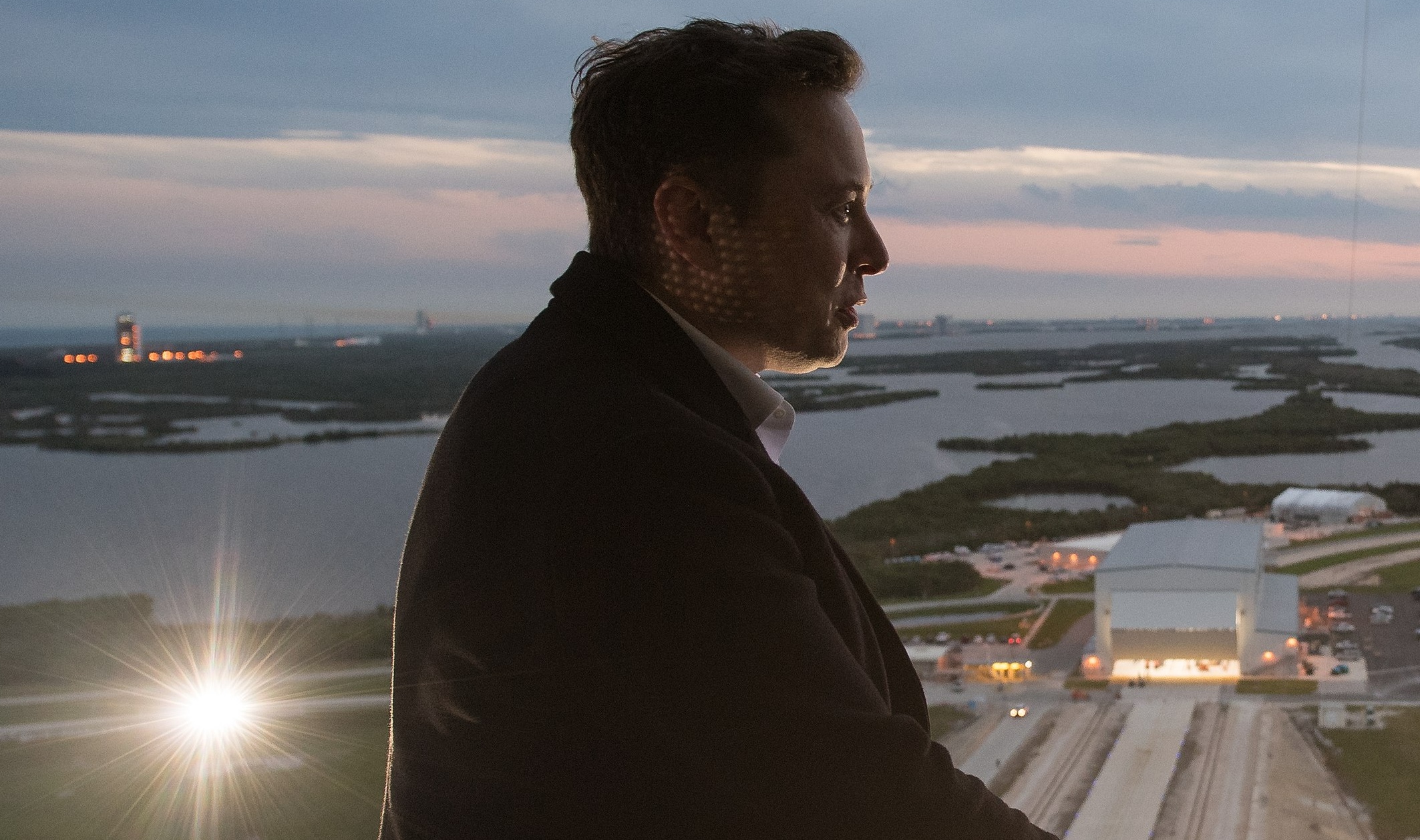
An X user with 184 followers has become the unlikely hero of the United States’ space program by effectively de-escalating a row between SpaceX CEO Elon Musk and President Donald Trump on social media.
Needless to say, the X user has far more than 184 followers today after his level-headed feat.
A Near Fall
During Elon Musk and Donald Trump’s fallout last week, the U.S. President stated in a post on Truth Social that a good way for the United States government to save money would be to terminate subsidies and contracts from the CEO’s companies. Musk responded to Trump’s post by stating that SpaceX will start decommissioning its Dragon spacecraft immediately.
Musk’s comment was received with shock among the space community, partly because the U.S. space program is currently reliant on SpaceX to send supplies and astronauts to the International Space Station (ISS). Without Dragon, the United States will likely have to utilize Russia’s Soyuz for the same services—at a significantly higher price.
X User to the Rescue
It was evident among X users that Musk’s comments about Dragon being decommissioned were posted while emotions were high. It was then no surprise that an X account with 184 followers, @Fab25june, commented on Musk’s post, urging the CEO to rethink his decision. “This is a shame this back and forth. You are both better than this. Cool off and take a step back for a couple days,” the X user wrote in a reply.
Much to the social media platform’s surprise, Musk responded to the user. Even more surprising, the CEO stated that SpaceX would not be decommissioning Dragon after all. “Good advice. Ok, we won’t decommission Dragon,” Musk wrote in a post on X.
Not Planned, But Welcomed
The X user’s comment and Musk’s response were received extremely well by social media users, many of whom noted that @Fab25june’s X comment effectively saved the U.S. space program. In a follow-up comment, the X user, who has over 9,100 followers as of writing, stated that he did not really plan on being a mediator between Musk and Trump.
“Elon Musk replied to me. Somehow, I became the accidental peace broker between two billionaires. I didn’t plan this. I was just being me. Two great minds can do wonders. Sometimes, all it takes is a breather. Grateful for every like, DM, and new follow. Life’s weird. The internet’s weirder. Let’s ride. (Manifesting peace… and maybe a Model Y.)” the X user wrote.
Lifestyle
Tesla Cybertruck takes a bump from epic failing Dodge Charger
The Cybertruck seemed unharmed by the charging Charger.
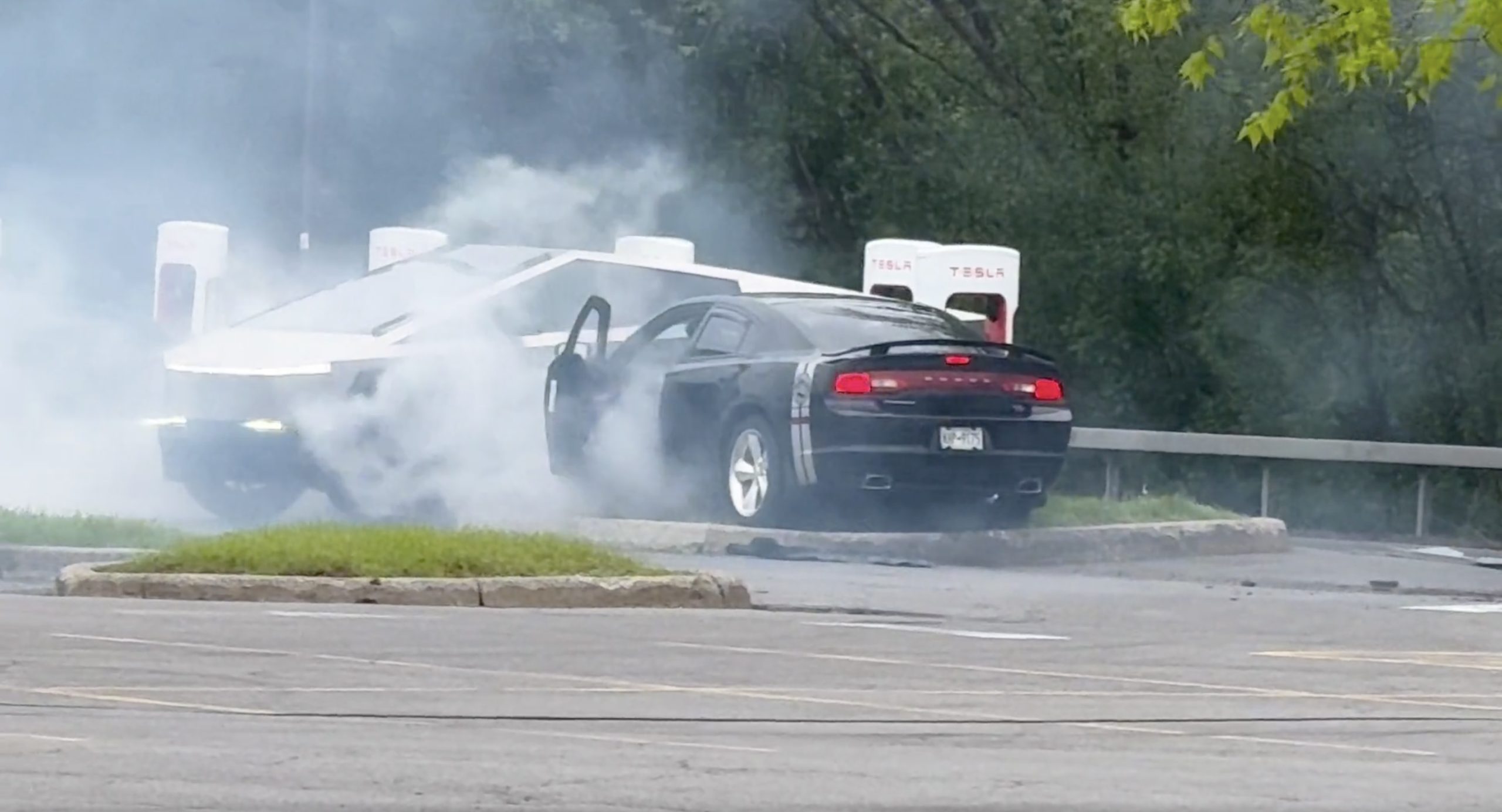
There comes a time in a driver’s life when one is faced with one’s limitations. For the driver of a Dodge Charger, this time came when he lost control and crashed into a Tesla Cybertruck–an absolute epic fail.
A video of the rather unfortunate incident was shared on the r/TeslaLounge subreddit.
Charging Charger Fails
As could be seen in the video, which was posted on the subreddit by Model Y owner u/Hammer_of_something, a group of teens in a Dodge Charger decided to do some burnouts at a Tesla Supercharger. Unfortunately, the driver of the Charger failed in his burnout or donut attempt, resulting in the mopar sedan going over a curb and bumping a charging Cybertruck.
Ironically, the Dodge Charger seemed to have been parked at a Supercharger stall before its driver decided to perform the failed stunt. This suggests that the vehicle was likely ICE-ing a charging stall before it had its epic fail moment. Amusingly enough, the subreddit member noted that the Cybertruck did not seem like it took any damage at all despite its bump. The Charger, however, seemed like it ran into some trouble after crashing into the truck.
Alleged Aftermath
As per the the r/TeslaLounge subreddit member, the Cybertruck owner came rushing out to his vehicle after the Dodge Charger crashed into it. The Model Y owner then sent over the full video of the incident, which clearly showed the Charger attempting a burnout, failing, and bumping into the Cybertruck. The Cybertruck owner likely appreciated the video, in part because it showed the driver of the Dodge Charger absolutely freaking out after the incident.
The Cybertruck is not an impregnable vehicle, but it can take bumps pretty well thanks to its thick stainless steel body. Based on this video, it appears that the Cybertruck can even take bumps from a charging Charger, all while chilling and charging at a Supercharger. As for the teens in the Dodge, they likely had to provide a long explanation to authorities after the incident, since the cops were called to the location.
Lifestyle
Anti-Elon Musk group crushes Tesla Model 3 with Sherman tank–with unexpected results
Ironically enough, the group’s video ended up highlighting something very positive for Tesla.
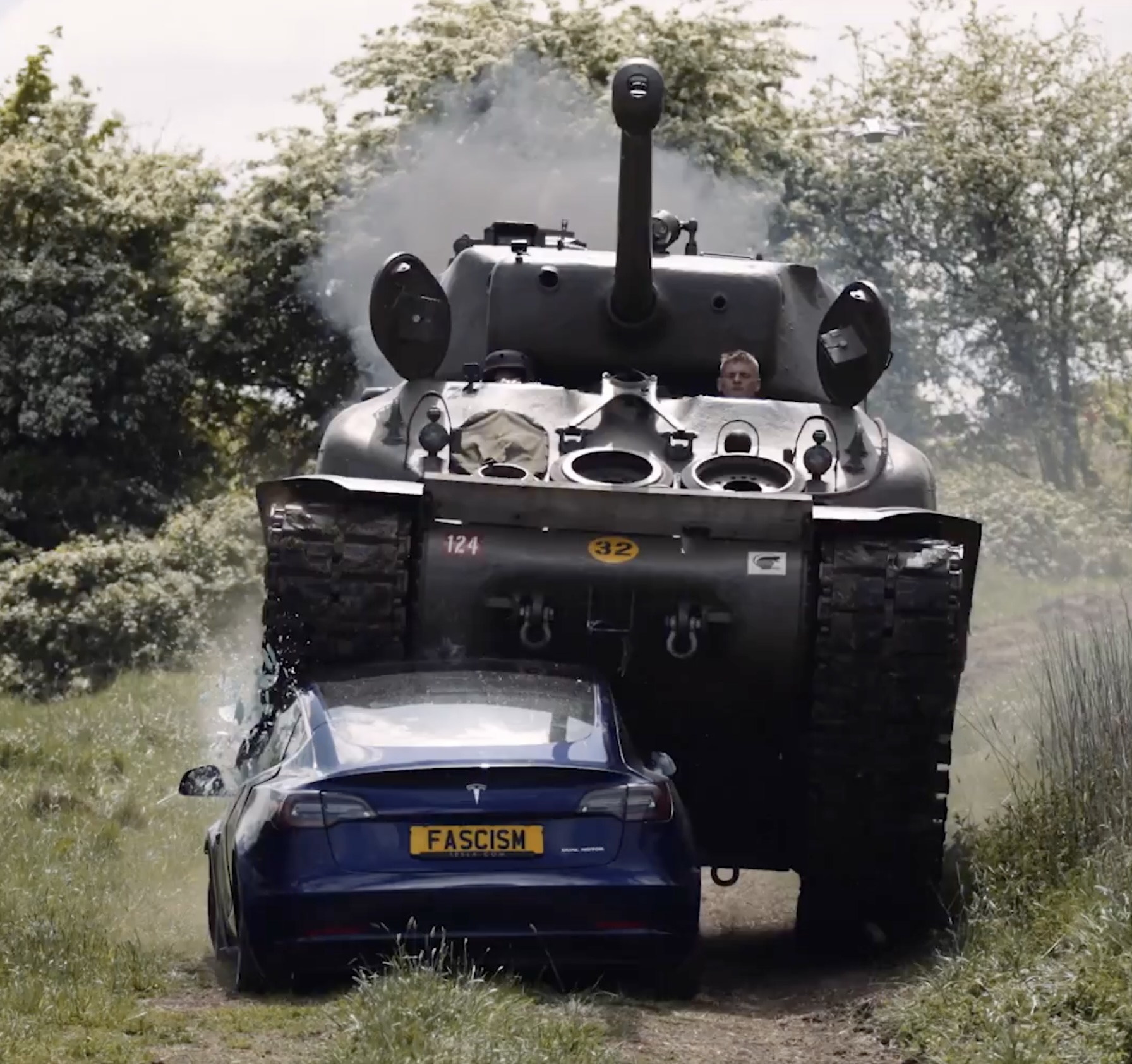
Anti-Elon Musk protesters and critics tend to show their disdain for the CEO in various ways, but a recent video from political action group Led By Donkeys definitely takes the cake when it comes to creativity.
Ironially enough, the group’s video also ended up highlighting something very positive for Tesla.
Tank vs. Tesla
In its video, Led By Donkeys featured Ken Turner, a 98-year-old veteran who served in the British army during World War II. The veteran stated that Elon Musk, the richest man in the world, is “using his immense power to support the far-right in Europe, and his money comes from Tesla cars.”
He also noted that he had a message for the Tesla CEO: “We’ve crushed fascism before and we’ll crush it again.” To emphasize his point, the veteran proceeded to drive a Sherman tank over a blue Tesla Model 3 sedan, which, of course, had a plate that read “Fascism.”
The heavy tank crushed the Model 3’s glass roof and windows, much to the delight of Led By Donkeys’ commenters on its official YouTube channel. But at the end of it all, the aftermath of the anti-Elon Musk demonstration ended up showcasing something positive for the electric vehicle maker.
Tesla Model 3 Tanks the Tank?
As could be seen from the wreckage of the Tesla Model 3 after its Sherman encounter, only the glass roof and windows of the all-electric sedan were crushed. Looking at the wreckage of the Model 3, it seemed like its doors could still be opened, and everything on its lower section looked intact.
Considering that a standard M4 Sherman weighs about 66,800 to 84,000 pounds, the Model 3 actually weathered the tank’s assault really well. Granted, the vehicle’s suspension height before the political action group’s demonstration suggests that the Model 3’s high voltage battery had been removed beforehand. But even if it hadn’t been taken off, it seemed like the vehicle’s battery would have survived the heavy ordeal without much incident.
This was highlighted in comments from users on social media platform X, many of whom noted that a person in the Model 3 could very well have survived the ordeal with the Sherman. And that, ultimately, just speaks to the safety of Tesla’s vehicles. There is a reason why Teslas consistently rank among the safest cars on the road, after all.
-

 Elon Musk4 days ago
Elon Musk4 days agoTesla investors will be shocked by Jim Cramer’s latest assessment
-

 News1 week ago
News1 week agoTesla Robotaxi’s biggest challenge seems to be this one thing
-

 Elon Musk2 weeks ago
Elon Musk2 weeks agoFirst Look at Tesla’s Robotaxi App: features, design, and more
-

 News2 weeks ago
News2 weeks agoSpaceX and Elon Musk share insights on Starship Ship 36’s RUD
-

 News2 weeks ago
News2 weeks agoWatch Tesla’s first driverless public Robotaxi rides in Texas
-

 News1 week ago
News1 week agoWatch the first true Tesla Robotaxi intervention by safety monitor
-

 News2 weeks ago
News2 weeks agoTesla has started rolling out initial round of Robotaxi invites
-

 Elon Musk2 weeks ago
Elon Musk2 weeks agoTesla to launch in India in July with vehicles already arriving: report


